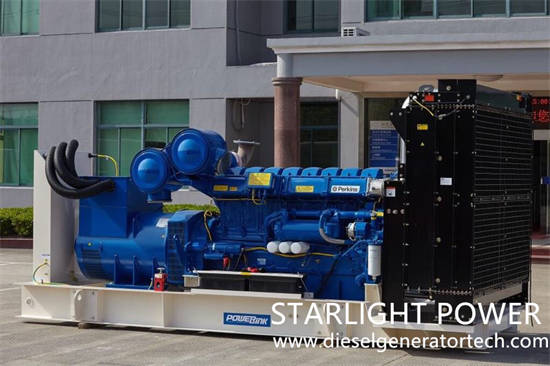After a period of use, certain parts of the diesel generator (such as the bottom of the cylinder head) will adhere to a solid layer of carbon deposits. Due to poor carbon conductivity, a large amount of carbon is formed on the surface of the part, the part is overheated locally, and the rigidity and strength are reduced. In severe cases, it will also cause serious failures such as nozzle burnout, valve ablation, piston ring jamming, and cylinder pulling. In addition, the large accumulation of carbon deposits will pollute the lubrication system, block the oil circuit and filter, and shorten the service life of the diesel engine. Therefore, it must be cleaned up during maintenance.
1.Mechanical methods. The mechanical method is to use steel wire brushes, scrapers, bamboo chips, gauze and other methods to grind and remove carbon deposits. Special brushes and scrapers can be made according to the shape of the cleaning part of the workpiece. The removal efficiency of mechanical carbon deposits is low, the quality is poor, and it is not easy to remove in some parts, leaving many small scratches, which can easily lead to new carbon deposits growing places, making the surface of the parts not smooth and flat. Therefore, parts that require high precision are not suitable for removing carbon deposits by this method.
2.The nuclear spray method. The walnut, peach kernel, and apricot core shell particles are sprayed with cores, and the carbon deposits are sprayed with high-speed airflow to remove carbon deposits. This method has high efficiency and thorough cleaning, but it needs special tools and equipment to form a high-speed airflow. The disadvantage is that the cost is very high and the conditions of use are also very limited.
3. Chemical methods. The chemical method uses chemical solvents (decarburizers) to soften the carbon deposits on the surface of the parts so that they cannot be combined with the metal, and then remove the carbon deposits. The method has high efficiency, good carbon removal effect, and the surface of the part is not easily damaged.

There are mainly two types of carbides, inorganic and organic.
1. Inorganic decarburizing agent: It is made of inorganic medicine and water and needs to be heated. According to different formulas, they are used for steel parts and aluminum parts. Using inorganic decarbonizer, the solution is heated to 80~90℃, and the parts are immersed in the solution for 2 hours. After the carbon deposits are softened, the carbon deposits are removed with a brush, and then washed with potassium dichromate hot water. The cleaning mass fraction is 0.1% ~0.3%, finally wipe dry with a soft cloth to avoid corrosion.
2. Organic decarburizing agent: A decarburizing solvent made of organic solvents. It has strong decarburization ability and is non-corrosive to metals. It can be used at room temperature and is mainly used for the removal of precision parts.
Inorganic salt decarbonizer formula.
Preparation 1: Ethyl acetate 4.5%, ethanol 22%, acetone 1.5%, benzene 40.8%, paraffin 1.2%, ammonia 30%. When preparing, just mix evenly according to the above mass ratio. When in use, soak the parts in the solvent for 2~3 hours, and then use a brush to soak in gasoline to remove the softened carbon deposits. This formula is corrosive to copper and is not suitable for decarburization of copper-containing parts. Does not corrode steel, iron and aluminum parts. It has the function of paint removal, so you should pay attention to ventilation when using it.
Preparation 2: Kerosene 22%, turpentine 2%, gasoline 8%, ammonia 15%, phenol 35%, oleic acid 8%. Mix kerosene, gasoline, and turpentine by mass percentage method, add phenols and oleic acid, add ammonia and stir, then add orange-red transparent liquid. When in use, soak the part that needs to be decarbonized in the solvent for 23 hours, and clean it with gasoline after the carbon deposits are softened. This formula is not suitable for steel parts.
Formula 3: 40% diesel, 20% soft soap, 30% mixed powder, 10% triolamine. During the preparation process, first heat the mixed powder to 80-90°C, and add soft soap with constant stirring. After fully dissolving, add diesel oil, and finally add triethanolamine. When using this product, put it in a container, heat it to 80-90℃ with steam, and soak for 2-3 hours. The formula will not corrode metals.
Jiangsu Starlight Electricity Equipments Co.,Ltd. is one of the earliest manufacturers of generating sets in China. It has first-class testing equipment, advanced production technology, professional manufacturing technology, perfect quality management system, and strong R&D technical strength. It can provide 3KW-2500KW various specifications of universal, automatic, four protection, automatic switching, low noise and mobile, etc., high-quality, low-energy generating sets to meet all customers' power needs, and can also meet users' different voltages and different Frequency requirements, as well as the parallel-connected power supply system of multiple units, use excellent talents to build excellent enterprises, create excellent products, create excellent services, and strive to build excellent domestic enterprises. For more product details, please contact us with [email protected]
Copyright © Guangxi Dingbo Generator Set Manufacturing Co., Ltd. All Rights Reserved | Sitemap
Update cookies preferences